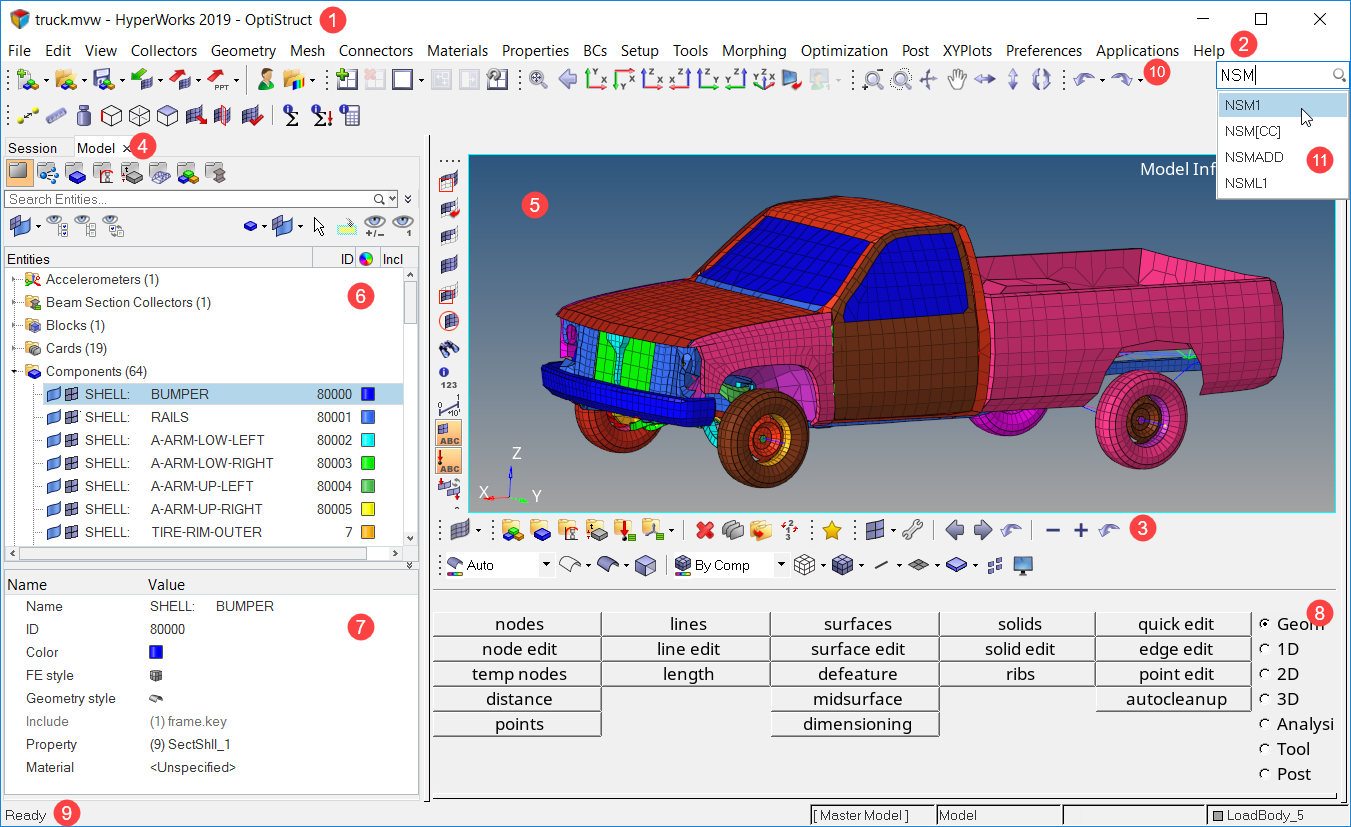User Interface
Explore the Engineering Solutions user interface.

- Title Bar. Indicates which product is active. Because you can switch between clients, clicking on and activating a different window may change the information in the title bar. If the client you have opened supports user profiles, the name of the active loaded user profile is also shown.
- Menu Bar. Contains pull-down menus that provide access to standard functions such as New, Open, Save and Undo/Redo. This is also where you can access system preferences, and the help.
- Toolbars. Group of icon buttons that provide access to common tools.
- Tab Area. Contains browsers, Utility menus for the solver interfacing user profiles, and other functionality not shown in the panel area.
- Modeling Window. Displays your model, geometry, and plots, and allows you to select entities and manipulate the view of the model in the modeling window.
- Browsers. Displays view-related functionality in HyperWorks Desktop by listing the parts of a model in a tabular and/or tree-based format, and provides controls inside the table that allow you to alter the display of model parts.
- Entity Editor. Opens when you select an entity in a browser, and allows you to view and edit entities in a model and correctly setup solver information.
- Panels. Displays pre-processing and post-processing tools.
- Status Bar. Displays information pertaining to the currently loaded model as well as descriptions of the pages and panels.
- Undo-Redo. Undo and redo actions
- Quick Access Tool. Quickly find and open the tools, panels, and browsers that are available from the menu bar pull-downs or from the Utility Browser, as well as create solver cards.